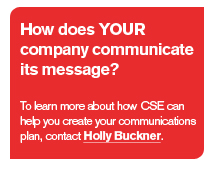 A Sound Communications Plan is a Smart Engagement Strategy
A Sound Communications Plan is a Smart Engagement Strategy
Have you been addressed by your CEO recently? What are your company goals for 2012? What progress is your company making? What is your company’s mission? What role do you play in achieving the mission and progressing toward and attaining company goals?
Hopefully, your company has a well conceived and executed communications plan that shares and reinforces information regularly.
 Communicating the big picture to employees is crucial to involving and engaging them in the overall success of your organization. Statistics indicate that employees who are fully engaged at work and in their work are more productive, loyal and profitable. “The Power of Full Engagement,” a book by Jim Loehr and Tony Schwartz states, “Engaged employees produce more, make more money for the company, and create emotional engagement and loyal customers.” What company doesn’t want that?
Communicating the big picture to employees is crucial to involving and engaging them in the overall success of your organization. Statistics indicate that employees who are fully engaged at work and in their work are more productive, loyal and profitable. “The Power of Full Engagement,” a book by Jim Loehr and Tony Schwartz states, “Engaged employees produce more, make more money for the company, and create emotional engagement and loyal customers.” What company doesn’t want that?
There are three key elements to ensuring your communication efforts are successful. Communication should be frequent, relevant, and reinforced. Without this, your company may be opening its doors to fear and trust issues as well as lack of efficiency and productivity at a minimum.
1. Frequent: The Rule of 7 - The rule of 7 is a traditional marketing practice that suggests people must see a marketing message 7 times before they take action. When communicating messages, whether to internal or external customers, the concepts remain the same. Think of ongoing communication with your staff as your internal marketing campaign; communicate it often and through various delivery methods.
2. Relevant: WIIFM - What’s In It for Me? Employees will internalize any message communicated. How will this affect me? What does this mean to me? Will it make my job harder? These questions are natural. The more relevant our messaging, the more our employee will be comfortable with the message.
Paint a picture of what this may look like: Take an example from a company quarterly review call. The message to be delivered is that thecompany is just short of making YTD numbers. The goal is to inform and engage at the same time:
"For those of you in the accounts receivable department this means that we need each of you to make some additional calls, get a bit more aggressive on receivables and collect payments on or before their due dates. Outside sales: marketing has put product X on promotion and we need you to really push those sales over the next few months."
This kind of communication engages and excites employees, promotes teamwork and aligns everyone toward achieving company goals.
3. Reinforced:
a) Tell ‘em what you are going to tell ‘em
b) Tell ‘em
c) Tell ‘em what you told ‘em
To reinforce your message, begin by telling your audience what you are going to tell them. For example, “Today we will talk about the 3 strategies driving our marketing efforts this year.” Then, tell them. “We are going to target international visitors from the South American regions. We will focus heavily on social media, and we will cultivate relationships with tour planners in the corporate market.” Of course, offer supporting information and some methodology and relevance in your message before you conclude. Then, conclude with telling them what you told them, “Over the past hour, we shared the three strategies that will drive our marketing efforts this year and how we plan to achieve them with everyone’s help and involvement.” “We will align all of our business practices to support this marketing effort and look forward to keeping everyone updated on our progress.”
Whether your message is about the big picture, a small change, straightforward annual goals, or a complete company restructure; a sound communications plan is integral to engaging employees and impacting the results of your message.
How does your company communicate its message?To learn more about how CSE can help you create your communications plan, contact Holly Buckner.
